Genre: Platform Developer: Zono Publisher: Sega Ent. Players: 1 Released: 1996
Sears is a now defunct department store which was better known for selling its Craftsman branded tools and being the place suburban moms bought clothes. There in the boys’ clothing section was a small video game display, a semi-circular wall of counters which let people look but not touch. It was one of those places which was never staffed and required you to hunt down an employee to buy something. There I stood in the fall of 1996, wondering which of Sega’s two new powerhouse releases I would buy with my limited funds: Fighting Vipers or mr. Bones.
Since this is not a Fighting Vipers review, then you know my shame. I don’t know what possessed me to go with mr. Bones. The artwork isn’t particularly appealing, and the packaging’s claim about the game’s “revolutionary, real-time shadows and storytelling” isn’t exciting in the least. I wasn’t a fan of blues music, and thus musician Ronnie Montrose’s soundtrack wasn’t a selling point for sure. Beyond a minor brain bleed, the only thing I can think of is the “over 20 marrow-tingling levels of unique gameplay” statement on the back of the box since that sounded intriguing.
Variety is the one thing mr. Bones has in spades. It’s an ambitious game, with pretty much each level bringing new gameplay ideas and presentation with it, each tailored to the unfolding story. Dagoulian, head bad guy of the game, has resurrected skeletons to serve as his undead army, but for reasons unexplained, Mr. Bones emerges with blue eyes and a soul. This impurity is immediately detected, and Dagoulian sics his undead army to capture Mr. Bones, which leads into the first stage: “Grave Escape.” Mr. Bones must flee the pursuing skeleton mob, leaping over obstacles and dodging things thrown at him. This introductory side-scrolling section uses FMV for the level graphics, which is a gimmick players will see a few times throughout the course of the game. Visually, it looks fantastic, but the section is dull, overly long, and poor playing.
Frankly, the game has a really rough start. For a game touting how unique its levels are, you’ll spend the first three levels fighting the somewhat janky controls making your way through what are more or less familiar 2-D platform-style levels. Mr. Bones can jump, duck, climb, and zap things with his skeletism beam – nothing particularly special. What kind of makes things interesting is how skeletism, the force which Dagoulian harnessed to revive all the skeletons, is tied into Mr. Bones’ own life meter and his ability to keep himself together. As you take damage, you’ll lose letters which spell our “Mr. Bones,” and this both weakens your attack and loosens the bond your bones have to each other. A weakened Mr. Bones will struggle to keep it together, which is an interesting concept. It tends to be more annoying than anything, but it’s still an example of the developer trying to think outside the box.
We finally get a taste of that variety after Mr. Bones meets Ronnie Montrose out in the woods. The “blind man” who managed to navigate a forest, build a cabin, and load it up with music gear gives Mr. Bones a guitar and teaches him about the blues. As he steps out, a crowd of skeletons surrounds him, and Mr. Bones must play guitar to bring them to his side. Each button plays a guitar lick, and you can interrupt the playback at any time. You just need to play somewhat melodically, and eventually you’ll win the army’s hearts, so to speak. “Guitar Solo,” this fourth stage, is simple but fun, engaging, and quite innovative. It’s exactly the kind of thing I was hoping for when I bought the game, and it made me excited to see what was to follow.
This is when the game kicks you where it hurts and says, “No, here’s more mediocre platforming.” The next three stages are lengthy filler mainly focused on bats trying to steal your bones. For a game driven by music, you play these stages – “Night of the Bat,” “Dawn of the Bat,” and “Day of the Bat” – in near silence, and the flat, 2D level graphics here don’t really mesh well with Mr. Bones’ polygon model. These levels won’t let you advance until you can recreate a particular skeleton formation adorning the exit sign which caps each level; that is, if the silhouette has one arm but you have two, you’ll need to disassemble and try to reassemble yourself to match before you can leave. It’s needlessly awkward. The game also includes three different “bonus” bone configurations, but even the manual notes that “Long Arm and Slim Jim are not necessary to complete the day level.” None of these are ever useful. Ever.
If this were a rental, I probably would have quit at this point, but no, stupid me passed on Fighting Vipers. I bought this thing. I had to continue playing. Thankfully, this is the absolute low note of mr. Bones, and while not every level to follow is a winner, it’s all uphill from here. Well, maybe technically downhill, since the next stage is another FMV stage with Mr. Bones fleeing rolling and bouncing giant logs, but that promised “unique gameplay” from the packaging finally starts making a regular appearance. There’s a trippy stage where you’re bouncing Mr. Bones atop his own head trying to reassemble his body, one using his shadow to overcome obstacles, and another where you need to tell jokes to beat a boss. No, really. mr. Bones has among the weakest starts of any game I’ve played, but the game design experiments like no other.
Likewise, mr. Bones may have a corny and simple plot, but the presentation is outstanding. Fitz Houston and Brian Vouglas, the actors behind Mr. Bones and Dagoulian respectively, do an amazing job elevating a script which is clearly beneath their ability. Houston’s narrative on the OST bonus track, “Bones’ Monologue,” is just so beautifully told, and he brings a warmth and charm which establish Mr. Bones as a character worth spending time with even as the game tests your patience. Aside from a fun, humorous detour to help some Lilliputians deal with their arachnid problem, there are no other spoken roles beyond what’s noted above, and Houston’s Mr. Bones carries the weight of the game on his clavicles.
Houston doesn’t do it alone though. Just as with Spencer Nilsen’s wonderful Sega CD Batman Returns score, Ronnie Montrose’s fantastic soundtrack helps make even the game’s sour notes more tolerable. I’ve no idea how Sega would come to enlist Montrose to provide a soundtrack – his only one — to its quirky skeleton blues game, but what he delivered is appropriately moody and rich. Standout track for me is “The Village” thanks to its awesome guitar tones and build up, and it’s always good to be able to listen outside of the game thanks to the Saturn’s Red Book encoding (though you’re more likely to look up a streaming source nowadays).
mr. Bones (yes, stylized with the lowercase “M” for some reason) is the brainchild of Ed Annunziata, the guy behind Ecco the Dolphin and Three Dirty Dwarves. His Angel Studios was behind the concept and casting, but the game was developed by Zono Inc., who you know from TechnoClash. No? Maybe Metal Fatigue, then? Still doesn’t ring a bell? Zono’s not a terrible developer, but maybe it bit off a bit more than it could chew with Annunziata’s vision of a truly interactive story using the myriad game engines it would require. Perhaps too much money went into the film and audio budget and not enough into development? Whatever the reason, we’re left with a decent game which has some sparks of brilliance but not enough whatever to truly make it work.
It’s difficult to imagine a game about a dead blues musician hosting a smorgasbord of different games being greenlighted by any studio today. It’s that kind of risk taking and willingness to experiment which made me a fan of Sega and led me to buy mr. Bones, and I’ve had a soft spot for the game ever since. Though the execution is often clumsy and there’s little actual depth to the games, I still am glad I got to experience the game even if it misses a bit more than it hits. The excellent presentation and unique concept make mr. Bones memorable and worth checking out, and the built-in level select makes sure you don’t have to trudge through those misses when you want to revisit the good stuff.
SCORE: 7 out of 10

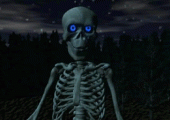
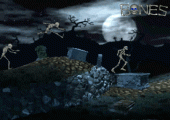
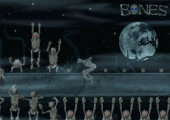
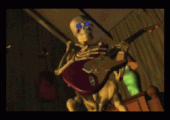
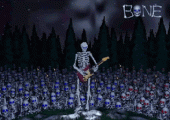
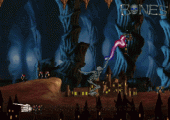
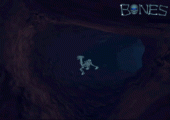
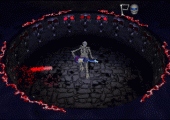

Recent Comments